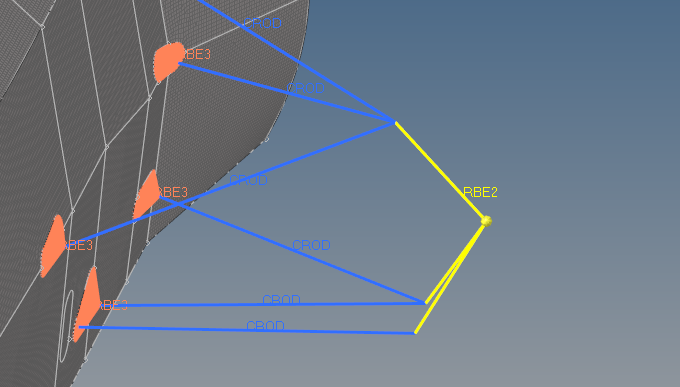Hello,
I want to model a suspension using 1D-Elements. CROD are used to model the rods from the chassis to the wheel carrier. They are connected to the chassis using RBE3 with dof123 constrained to allow for free rotation. The problem is with the connection to and modeling of the wheel carrier. The rods need to be able to rotate freely around the connection points to the wheel carrier as well. I know about BEAM-Elements but as far as I know they only allow for free rotation around 1 axis. ROD- elements shouldnt constrain the rotations either, but they added stiffness to the model compared to the last option, a simple RBE2 with dof 123 from the end points of the rod to the wheel center as a central node. This setup with an RBE2 with dof123 as a wheelcarrier works good in analysis, but in freeesize I randomly get the error
' *** ERROR # 153 ***
Exactly zero pivoting encountered during Numerical Factorization;
the model may have rigid body mode. '
- My question are as follows: Why dont rods work as intended? They shouldnt constrain rotation as far as i know
- Why does the rbe2 lead to that error? in analysis the flow of force makes sense and no anomalies appear, sometime the freesize even completes without any problem at all.
- do you know of any way to model freely rotatable 1D-elements aside from the options above?
Below is a picture of the model:
